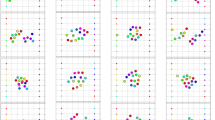Abstract
The control system design and modeling of an unmanned vehicle by means of a new concept for better performance through a tele-operation system is suggested by sensor fusion. But, the control of a real vehicle is very difficult, because the system identification of the vehicle is hard to find the unknown factors and the disturbances of the experimental environment. For the longitudinal and lateral controls, the traction system and steering system models are set up and a tuning method to find the gain of the controller by experiments is presented. In this research, mechanical and electronic parts are implemented to operate the unmanned vehicle and data reconstruction method of information about the environment data coming from several sensors is presented by data plot for the vehicle navigation. This paper focuses on the integration of tele-operated unmanned vehicle. This vehicle mainly controlled lateral and longitudinal directions with actuators for controlling vehicle movement and sensors for the closed-loop controlled system.
Similar content being viewed by others
Abbreviations
- βf :
-
Side Slip Angle of Front Wheel
- βr :
-
Side Slip Angle of Rear Wheel
- δ:
-
Steering Angle
- τ:
-
Torque of DC Motor
- ω:
-
Angular Velocity of DC Motor
- f :
-
Friction Constant of DC Motor
- i a :
-
Magnetic Core Current of DC Motor
- i f :
-
Magnetic Current of DC Motor
- I :
-
Yaw Moment of Vehicle
- J :
-
Inertia of DC Motor Torgue
- k f :
-
Cornering Force of Front Wheel
- k r :
-
Cornering Force of Rear Wheel
- k t :
-
Coefficient of DC Motor
- k v :
-
Inverse Electricity Generation Constant
- lf:
-
Length from Gravity Center Point to Front Wheel
- I r :
-
Length from Gravity Center Point to Rear Wheel
- L a :
-
Inductance Component of Magnetic Windings
- m :
-
Total Mass of Vehicle
- r :
-
Yaw Angular Velocity
- R a :
-
Internal Resistance
- Y f1, Yf2 :
-
Lateral Force of each Front Wheel
- Y r1, Yr2 :
-
Lateral Force of each Rear Wheel
- u :
-
Input Voltage
- V a :
-
Input Voltage of DC Motor
- V k :
-
Induced Inverse Generation of Electricity
References
Ahn Woo Sung and Park Hong Hyeon, 2000, “H∞. Robust Yaw-Moment Control Based on Brake Switching for the Enhancement of Vehicle Performance and Stability,”Trans, of the KSME, Vol. 24A, No. 8. pp. 1899–1909.
Kim Min Suk. 2001, “The System Modeling for Unmanned Vehicle & Autonomous Driving Technique by Ultrasonic Sensors,” Master Thesis, Kookmin University.
Shim Jae Heung, 2001, “The System Design and Analysis of Unmanned Vehicle for the Tele -operating Control,” Master Thesis, Kookmin University.
Yun Duk Sun and Kim Jung Ha, 2000, “The System Integration of Unmanned Vehicle & Driving Simulator for the Tele-Operated Vehicle System,”Proceeding of the Intl. Conf. oflASTED on RA2000, pp. 197–201.
Yun Duk Sun and Kim Jung Ha, 2001, “The Performance Evaluation of Sensor & Actuator System for the Integration of Unmanned Vehicle and Driving Simulator.”Intl. Conf. of IASTED on Modeling & Simulation, pp. 297–302.
Yun Duk Sun and Kim Jung Ha, 1999, “The Sensor Fusioning of Gyro Controller System for the Smart Vehicle,” Intl. Conf. of IEEE on MFI, pp. 189–194.
Author information
Authors and Affiliations
Corresponding author
Rights and permissions
About this article
Cite this article
Yun, D.S., Lee, W.S. & Kim, J.H. The control system modeling and experiment for the tele-operated unmanned vehicle. KSME International Journal 16, 1253–1263 (2002). https://doi.org/10.1007/BF02983832
Received:
Revised:
Issue Date:
DOI: https://doi.org/10.1007/BF02983832




